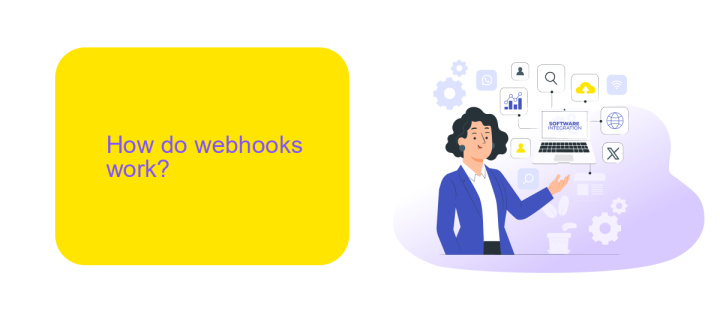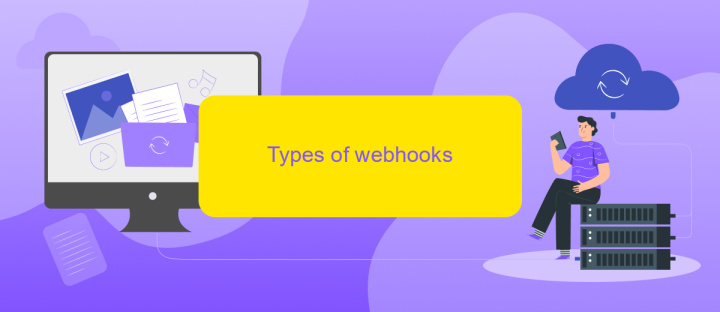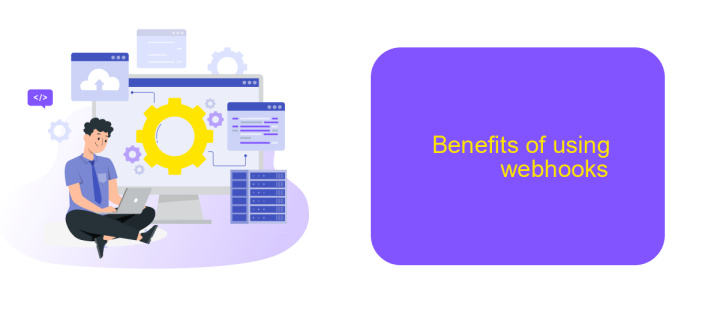What is Webhooks by Zapier
Webhooks by Zapier offer a powerful way to automate workflows by enabling applications to communicate with each other in real-time. By sending data instantly from one app to another, webhooks eliminate the need for manual updates and streamline processes. In this article, we will explore how Webhooks by Zapier work, their benefits, and practical applications for enhancing productivity.
What are webhooks?
Webhooks are a method for web applications to communicate with each other in real-time. They allow one system to send automated messages or data to another system when a specific event occurs. Unlike traditional APIs that require regular polling to check for updates, webhooks push data instantly, making them more efficient and timely.
- Real-time data transfer
- Automated notifications
- Efficient and resource-saving
Setting up webhooks can be simplified with integration services like ApiX-Drive. This platform allows you to configure webhooks between different applications without needing extensive coding knowledge. By using ApiX-Drive, you can streamline your workflows and ensure that your systems are always in sync, enhancing productivity and reducing manual effort.
How do webhooks work?

Webhooks operate by sending real-time data from one application to another whenever a specific event occurs. When an event is triggered in the source application, it sends an HTTP request to a predefined URL, often called an endpoint. This request contains a payload with relevant information about the event, which the receiving application can then process and use accordingly. Unlike traditional APIs that require periodic polling to check for new data, webhooks push the data instantly, making them more efficient and timely.
Setting up webhooks typically involves configuring the source application to send data to the endpoint URL provided by the destination application. Services like ApiX-Drive simplify this process by offering a user-friendly interface for creating and managing webhook integrations. With ApiX-Drive, users can easily connect various apps without needing extensive coding knowledge. The service handles the complexities of data mapping and transformation, ensuring seamless communication between different systems. This makes it easier for businesses to automate workflows and enhance productivity through real-time data sharing.
Types of webhooks

Webhooks are a powerful tool for automating workflows and integrating different services. They allow one system to send real-time data to another whenever a specific event occurs. Understanding the different types of webhooks can help you better utilize this technology in your projects.
- Incoming Webhooks: These webhooks allow external services to send data into your application. For example, you can use ApiX-Drive to connect various apps and receive real-time updates whenever a new event occurs.
- Outgoing Webhooks: These webhooks enable your application to send data to an external service. This is useful for notifying other systems about events in your application. ApiX-Drive can help you set up these webhooks to ensure seamless communication between your apps.
- Custom Webhooks: These are tailored to specific needs and can be configured to handle various types of data and events. With ApiX-Drive, you can create custom webhooks that meet your unique requirements, ensuring that your integrations are as efficient as possible.
By understanding and utilizing these types of webhooks, you can create more efficient and responsive integrations. ApiX-Drive simplifies this process, allowing you to easily set up and manage both incoming and outgoing webhooks, as well as create custom solutions tailored to your specific needs.
Benefits of using webhooks

Webhooks offer an efficient way to automate tasks and streamline workflows by allowing different applications to communicate in real-time. Unlike traditional APIs, which require periodic polling to check for updates, webhooks send data as soon as an event occurs, ensuring timely and accurate information transfer.
One of the key benefits of using webhooks is their ability to reduce server load and bandwidth usage. By eliminating the need for continuous polling, webhooks ensure that your system only processes data when necessary. This not only improves performance but also reduces operational costs.
- Real-time data transfer
- Reduced server load
- Improved efficiency
- Cost-effective
Services like ApiX-Drive make it easy to set up and manage webhooks, providing user-friendly interfaces and robust integration options. With ApiX-Drive, you can quickly connect your applications and automate workflows without extensive coding knowledge, making it an ideal solution for businesses looking to enhance their operational efficiency.
Use cases for webhooks
Webhooks are incredibly versatile tools that can be used in various scenarios to enhance automation and efficiency. For instance, e-commerce platforms can use webhooks to automatically update inventory levels or notify customers about their order status in real-time. This eliminates the need for manual updates and ensures that customers receive timely information, thereby improving the overall user experience. Additionally, webhooks can be employed to trigger alerts in project management tools whenever a new task is created or an existing one is updated, ensuring that team members are always in the loop.
Another compelling use case for webhooks is in integrating different software applications. Services like ApiX-Drive make it easy to set up these integrations without requiring extensive coding knowledge. For example, a webhook can be configured to automatically transfer data from a CRM system to an email marketing platform, enabling seamless synchronization between the two. This ensures that your marketing campaigns are always based on the most up-to-date information, thereby increasing their effectiveness. By leveraging webhooks, businesses can create a more connected and efficient workflow, ultimately saving time and reducing the potential for errors.
- Automate the work of an online store or landing
- Empower through integration
- Don't spend money on programmers and integrators
- Save time by automating routine tasks
FAQ
What are Webhooks by Zapier?
How do I set up a Webhook in Zapier?
Can I use Webhooks by Zapier for two-way communication between apps?
What kind of data can I send with Webhooks by Zapier?
Are there alternatives to Webhooks by Zapier for automation and integration?
Routine tasks take a lot of time from employees? Do they burn out, do not have enough working day for the main duties and important things? Do you understand that the only way out of this situation in modern realities is automation? Try Apix-Drive for free and make sure that the online connector in 5 minutes of setting up integration will remove a significant part of the routine from your life and free up time for you and your employees.


